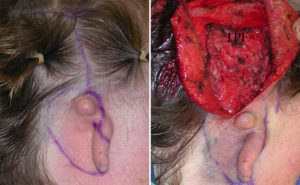Background: Microtia is a well known congenital ear deformity where the external ear has variable amounts of underdevelopment. It is not that rare of a facial deformity affecting about 1 in 10,000 births. While it can occur in both ears, it more commonly affects one side of which it occurs far more frequently on the right side.
Microtia is almost always treated, at least in the U.S., in childhood. Its reconstruction is done by two basic methods in children, a completely autologous rib graft method and a combined synthetic ear framework covered by an autologous fascial flap-skin graft. There are surgical advocates for each ear reconstruction method and each one has its own distinct advantages and disadvantages. In children the use of a synthetic ear framework and rib graft methods is probably about equally divided.
Adult microtia is very rare in the U.S. as almost all cases get some form of treatment as a child. It is becoming more prevalent with the growing number of immigrants who did not have access to plastic surgery care in their country of origin. But regardless of the nationality of the adult, the tilt in ear reconstruction favors the use of a synthetic framework method as it avoids a rib graft scar and the unpredictability of how well adult rib cartilage can be shaped.
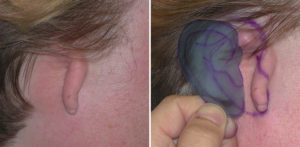
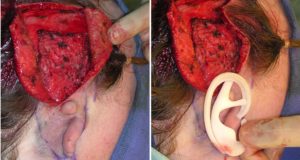
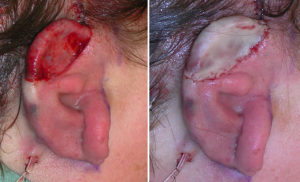
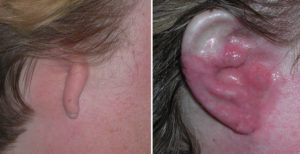
In adult microtia reconstruction, an implant and autologous soft tissue coverage approach is preferred. It produces the best looking result due to the implant’s shape and often can be done in just one stage with simultaneous flap and skin graft outer coverage.
Highlights:
1) Adult microtia reconstruction is very uncommon in the U.S.
2) Adult ear reconstruction usually consists of a synthetic framework covered with a temporalis fascial flap and skin graft.
3) In adult females the temporal scar is less relevant than it is in many adult males for the peddled flap harvest.
Dr. Barry Eppley
Indianapolis, Indiana



